
Frederick George Peter Ingle Finch was an English-Australian actor of theatre, film and radio.

Jedda, released in the UK as Jedda the Uncivilised, is a 1955 Australian film written, produced and directed by Charles Chauvel. His last film, it is notable for being the first to star two Aboriginal actors, Robert Tudawali and Ngarla Kunoth in the leading roles. It was also the first Australian feature film to be shot in colour.

Michael Charles Gauntlet Wilding was an English stage, television, and film actor. He is best known for a series of films he made with Anna Neagle; he also made two films with Alfred Hitchcock, Under Capricorn (1949) and Stage Fright (1950); and he guest starred on Hitchcock's TV show in 1963. He was married four times, including to Elizabeth Taylor, with whom he had two sons.

Ronald Grant Taylor was an English-Australian actor best known as the abrasive General Henderson in the Gerry Anderson science fiction series UFO and for his lead role in Forty Thousand Horsemen (1940).
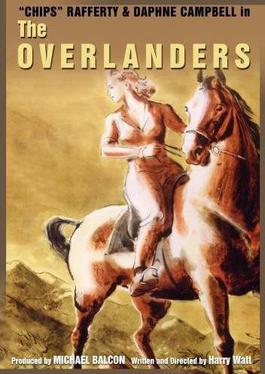
The Overlanders is a 1946 British-Australian Western film about drovers driving a large herd of cattle 1,600 miles overland from Wyndham, Western Australia through the Northern Territory outback of Australia to pastures north of Brisbane, Queensland during World War II.

Smiley is a 1956 British-American comedy film directed by Anthony Kimmins and starring Colin Petersen. It was based on the 1945 novel of the same name by Moore Raymond who co-wrote the film with Kimmins. It tells the story of a young Australian boy who is determined to buy a bicycle for four pounds, and along the way he gets into many misadventures.
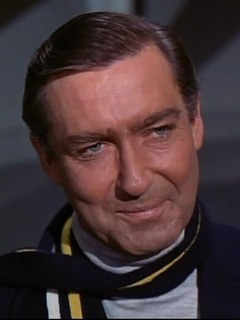
Guy Doleman was a New Zealand born actor, active in Australia, Britain and the United States. He is possibly best remembered for being the first actor to play Number Two in the classic cult series The Prisoner.
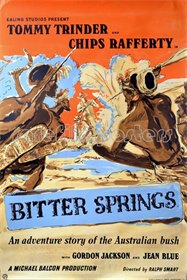
Bitter Springs is a 1950 Australian–British film directed by Ralph Smart. An Australian pioneer family leases a piece of land from the government in the Australian outback in 1900 and hires two inexperienced British men as drovers. Problems with local Aboriginal people arise over the possession of a waterhole. Much of the film was shot on location in the Flinders Ranges in South Australia
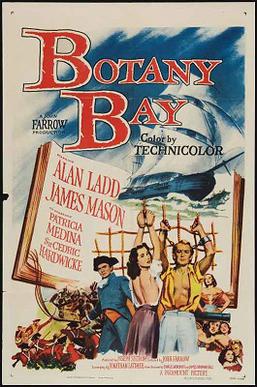
Botany Bay is a 1953 American adventure film directed by John Farrow and starring Alan Ladd, James Mason and Patricia Medina. It was based on a novel of the same name by Charles Nordhoff and James Norman Hall.
Sons of Matthew is a 1949 Australian film directed and produced and co-written by Charles Chauvel. The film was shot in 1947 on location in Queensland, Australia, and the studio sequences in Sydney. Sons of Matthew took 18 months to complete, but it was a great success with Australian audiences when it finally opened in December 1949.
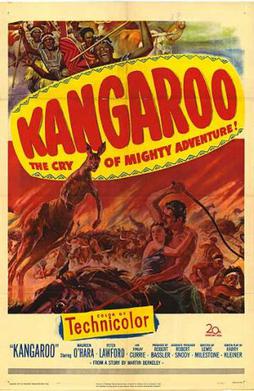
Kangaroo is a 1952 American Western film directed by Lewis Milestone. It was the first Technicolor film filmed on location in Australia. Milestone called it "an underrated picture."
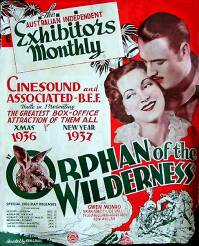
Orphan of the Wilderness is a 1936 Australian feature film from director Ken G. Hall about the adventures of a boxing kangaroo. It starred Brian Abbot who disappeared at sea not long after filming completed.

Bush Christmas is a 1947 Australian–British comedy film directed by Ralph Smart and starring Chips Rafferty. It was one of the first films from Children's Entertainment Films, later the Children's Film Foundation.
Tom McCreadie (1907–1992), better known as T. O. McCreadie was an Australian film director and producer, who was also involved in distribution and exhibition for many years.
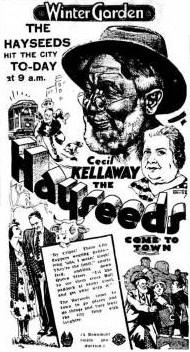
The Hayseeds is a 1933 Australian musical comedy from Beaumont Smith. It centres on the rural family, the Hayseeds, about whom Smith had previously made six silent films, starting with Our Friends, the Hayseeds (1917). He retired from directing in 1925 but decided to revive the series in the wake of the box office success of On Our Selection (1932). It was the first starring role in a movie for stage actor Cecil Kellaway.
Pagewood Studios was a film studio in Sydney, Australia, that was used to make Australian, British and Hollywood films for 20 years.
Anthony Scott Veitch was an Australian writer of radio, films, novels and TV. He worked for a number of years in British film and TV. His feature credits include The Kangaroo Kid (1950) and Coast of Skeletons (1964). He wrote more than 100 novels, including westerns and historical fiction.
The 1950 Great Britain Lions tour was a tour by the Great Britain national rugby league team of Australia and New Zealand which took place between May and August 1950. The tour involved a schedule of 25 games: 19 in Australia including a three-test series against Australia for the Ashes, and a further 6 in New Zealand including two test matches against New Zealand. A scheduled fixture in Forbes, New South Wales, against a Western Districts team, was abandoned when the chartered plane could not land due to bad weather. Captained by Ernest Ward, the Lions returned home having won 19 and lost 6 of their games. The team won the first test match of the tour but lost the second and third to lose the Ashes Test series to Australia. The team also lost both Test Matches in and against New Zealand. Despite being a British team – five of the squad were Welsh – the team played, and were often referred to by both the press at home and away, as England.
The 1948–49 Kangaroo tour was the seventh Kangaroo tour, in which the Australian national rugby league team travelled to Great Britain and France and played thirty-seven matches, including the Ashes series of three Test matches against Great Britain, an international match against Wales and two Test matches against the French. It followed the tour of 1937-38 and a cessation of overseas international tours due to World War II. The next was staged in 1952-53.
The 1937–38 Kangaroo tour was the sixth Kangaroo tour, in which the Australian national rugby league team travelled to New Zealand, Great Britain and France and played thirty-eight matches, including the Ashes series of three Test matches against Great Britain, and two Test matches each against the Kiwis and French. It followed the tour of 1933-34. Following a cessation of overseas international tours due to World War II, the next tour was staged in 1948-49.













